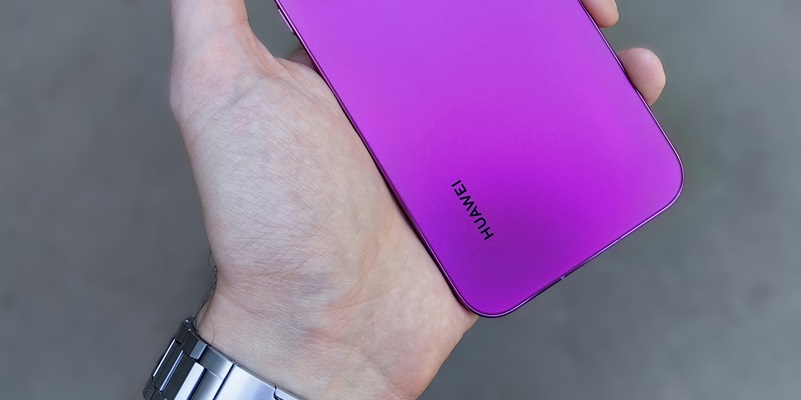The anticipated release of the Huawei Mate 70 series, expected in late 2024, has sparked significant curiosity and excitement within the tech community. Known for pushing the boundaries of design and technology, Huawei promises to deliver a sophisticated lineup that will likely challenge conventional notions of what makes a premium smartphone. This next generation is expected to be an evolution from its predecessors, particularly the Mate 60 series, bringing with it substantial design shifts, upgraded features, and adjustments that could set new trends in the industry. However, with ever-advancing technologies and fierce competition from other flagship manufacturers, the Mate 70 series has its work cut out for it.
Design Philosophy and Aesthetic Overhaul
The design shift from the Huawei Mate 60 series to the Mate 70 series is one of the most talked-about aspects of the forthcoming release. Moving away from the sophisticated round camera hump that characterized the Mate 60 series, the new design features a striking and bold look. This includes two dark concentric rings around a large pale central circle, which is likely a substantial flash module. This creates a stark contrast that makes the new design easily distinguishable from its predecessors and competitors alike. The repositioning of the XMAGE logo to a bottom accent, similar to the Mate X5, adds another layer of nuance to the aesthetic overhaul.
Each handset is reportedly to feature three lenses arranged in the outer ring, offering a robust camera system that could appeal to photography enthusiasts. One variant, in particular, is anticipated to have an octagonal camera housing, indicating it as the successor to the Mate 60 RS and expected to be named the Mate 70 RS Ultimate. This specific model seems to be aimed at consumers who seek a high-end, luxurious device with unique design elements. By implementing these bold changes, Huawei aims to make a significant statement, emphasizing both functionality and aesthetics in its new lineup.
Pricing Strategy and Market Positioning
As with previous models, the Huawei Mate 70 series maintains its position in the premium market segment, a move underscored by its pricing strategy. The Mate 70 RS Ultimate, which is likely to be the series’ most luxurious and feature-packed model, is anticipated to be priced around 10,999 yuan (~$1,541) for a 16GB RAM/512GB internal storage configuration. This price point places it firmly in the high-end category, targeting consumers who are willing to invest in top-tier technology and design.
The pricing of the other models within the series also reflects this premium positioning. The next highest model, the Mate 70 Pro+, is expected to start at 8,999 yuan (~$1,260), while the Mate 70 Pro might be available for approximately 6,999 yuan (~$980). Even the base model of the series, the Mate 70, is expected to start at around 5,999 yuan (~$840). This pricing strategy not only maintains but potentially exceeds the cost of their predecessors, signaling Huawei’s confidence in the value and capabilities of the Mate 70 series. These price points also set consumer expectations high, promising a blend of exceptional design, powerful performance, and advanced features.
Feature Upgrades and Storage Enhancements
The Huawei Mate 70 series is set to introduce several significant feature upgrades that could redefine user experience. Storage is a key area that sees substantial improvement; the base model now starts with 256GB of internal storage, which is double the initial offering of its predecessors. This enhancement highlights Huawei’s commitment to providing ample storage space to handle the increasing demands for high-resolution media, apps, and other data-heavy content. Coupled with options that go up to 512GB, the Mate 70 series ensures that users will have more than enough space for their needs.
Camera technology also receives a major upgrade in the Mate 70 series. Building on the AI capabilities and hardware improvements from the Mate 60 series, the new models are expected to deliver even more advanced photography and videography features. The inclusion of multiple lenses arranged in a unique configuration and accompanied by a substantial flash module underlines Huawei’s focus on providing top-notch camera performance. Furthermore, these camera enhancements are likely to be supported by software optimizations that leverage artificial intelligence for improved image processing, making the Mate 70 series a compelling choice for photography enthusiasts.
Competitive Challenges and Strategic Implications
The eagerly awaited Huawei Mate 70 series, scheduled for release in late 2024, is causing quite a stir within the tech community. Renowned for its cutting-edge design and advanced technology, Huawei is gearing up to present a sophisticated lineup set to reshape conventional views on what defines a premium smartphone. This upcoming generation is poised to be an impressive progression from its predecessors, especially the Mate 60 series. It promises significant design overhauls, feature upgrades, and tweaks that could potentially set new industry trends.
However, this launch doesn’t come without its challenges. With rapid advancements in technology and intense competition from other flagship brands like Apple and Samsung, Huawei’s Mate 70 series faces a demanding market. Expectations are high, as tech enthusiasts eagerly anticipate how Huawei will integrate the latest innovations to gain a competitive edge. The excitement surrounding the Mate 70 series indicates that it could either revolutionize the smartphone industry or struggle against its formidable rivals. Ultimately, only time will tell if it will meet and exceed expectations.

